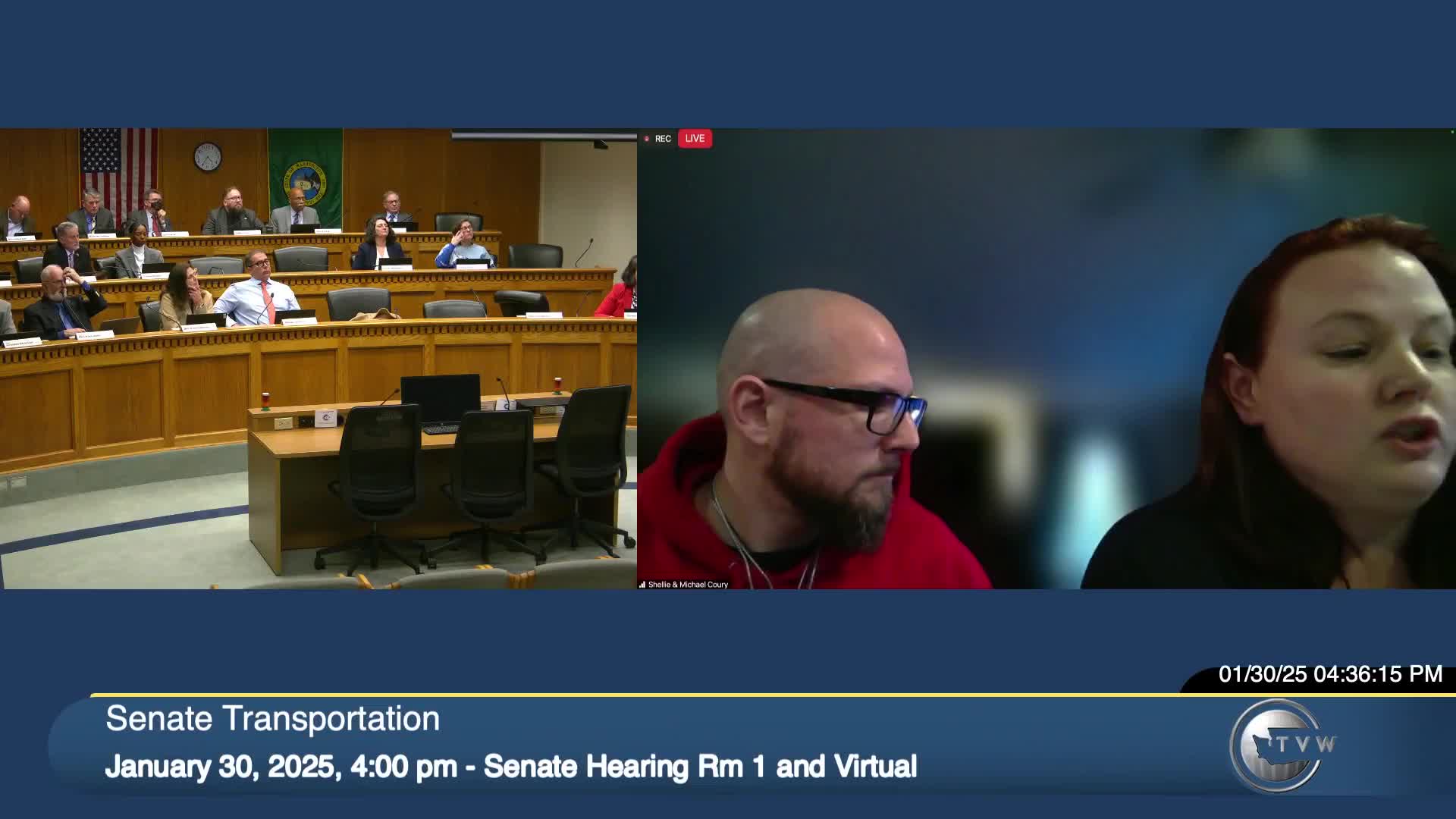Families advocate for SB 5067 to lower BAC limit after tragic drunk driving deaths
January 30, 2025 | Law & Justice, Senate, Legislative Sessions, Washington
This article was created by AI summarizing key points discussed. AI makes mistakes, so for full details and context, please refer to the video of the full meeting. Please report any errors so we can fix them. Report an error »

In a poignant government meeting on January 30, 2025, the Washington Senate Law & Justice Committee convened to discuss Senate Bill 5067, aimed at reducing the legal blood alcohol concentration (BAC) limit for driving from 0.08 to 0.05. This proposed change comes in the wake of tragic personal testimonies from families who have suffered devastating losses due to impaired driving.
The meeting featured emotional accounts from individuals like Rich, who shared the heart-wrenching story of his son Gabriel, who was killed by a drunk driver at just 12 years old. Rich emphasized that impaired driving is a preventable tragedy and urged lawmakers to support SB 5067 to protect other families from similar grief. He highlighted that a 19-year-old driver, under the influence, was able to operate a vehicle at 90 miles per hour on a road with a 35-mile-per-hour limit, underscoring the urgent need for stricter regulations.
Ashley Bonas also spoke passionately about her sister, Stacy, who was killed by an impaired driver in 2012. She described Stacy as a dedicated teacher and a beacon of kindness, whose life was cut short by a preventable act. Ashley's testimony reinforced the idea that lowering the BAC limit could save lives, as studies indicate that impairment begins well below the current legal limit. She called for a cultural shift in how society views impaired driving, stating, "Driving impaired is completely unacceptable."
The committee's discussions highlighted the broader implications of impaired driving, noting a significant increase in drunk driving deaths in Washington since 2019. The proposed legislation aims not only to change the law but also to send a clear message that driving under the influence at any level is intolerable.
As the meeting transitioned to a public hearing on SB 5067, the testimonies served as a powerful reminder of the human cost of impaired driving. The committee's decision on this bill could mark a critical step toward enhancing road safety and preventing future tragedies. The urgency of the matter was palpable, with advocates and lawmakers alike recognizing that the time for change is now.
The meeting featured emotional accounts from individuals like Rich, who shared the heart-wrenching story of his son Gabriel, who was killed by a drunk driver at just 12 years old. Rich emphasized that impaired driving is a preventable tragedy and urged lawmakers to support SB 5067 to protect other families from similar grief. He highlighted that a 19-year-old driver, under the influence, was able to operate a vehicle at 90 miles per hour on a road with a 35-mile-per-hour limit, underscoring the urgent need for stricter regulations.
Ashley Bonas also spoke passionately about her sister, Stacy, who was killed by an impaired driver in 2012. She described Stacy as a dedicated teacher and a beacon of kindness, whose life was cut short by a preventable act. Ashley's testimony reinforced the idea that lowering the BAC limit could save lives, as studies indicate that impairment begins well below the current legal limit. She called for a cultural shift in how society views impaired driving, stating, "Driving impaired is completely unacceptable."
The committee's discussions highlighted the broader implications of impaired driving, noting a significant increase in drunk driving deaths in Washington since 2019. The proposed legislation aims not only to change the law but also to send a clear message that driving under the influence at any level is intolerable.
As the meeting transitioned to a public hearing on SB 5067, the testimonies served as a powerful reminder of the human cost of impaired driving. The committee's decision on this bill could mark a critical step toward enhancing road safety and preventing future tragedies. The urgency of the matter was palpable, with advocates and lawmakers alike recognizing that the time for change is now.
View full meeting
This article is based on a recent meeting—watch the full video and explore the complete transcript for deeper insights into the discussion.
View full meeting
